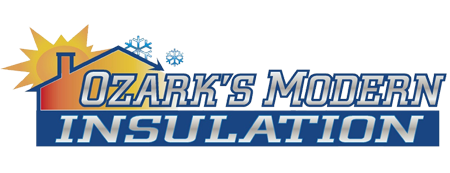Insulation
Insulation has always been the heart of our business.
We pride ourselves on excellence and are well aware that the products we use have impact on performance. This is why we strive to use great products from brand leaders in the industry. We always provide FREE ESTIMATES, and would love the opportunity to help you with your insulation needs! Click any of the drop down menus below to read more about the products and services we offer.

What We Offer
Fiberglass Batts
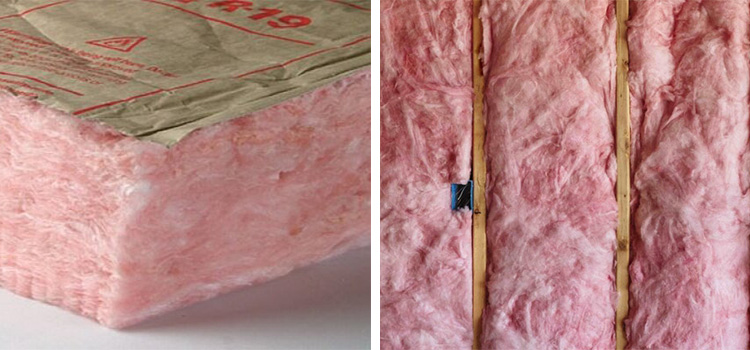
The most traditional and economical type of insulation available. It’s not the most efficient option, but can sometimes be necessary when budgets are tight. (Manufacturer: Owens Corning/ CertainTeed)
Blown Fiberglass

This is a blown application that is used in attics and exterior walls of new or existing structures. Blown Fiberglass insulation is a great choice because its physical properties make it light and fluffy. Therefore, it easily holds its depth and R-Value very well over time, making it nearly a maintenance-free product. When adding insulation to an existing attic, we prefer to use Fiberglass since its lighter weight won’t compact the existing insulation below it as much. (Manufacturer: Owens Corning/ CertainTeed, Product: ProPink L77/ Insulsafe SP)
Blown Cellulose
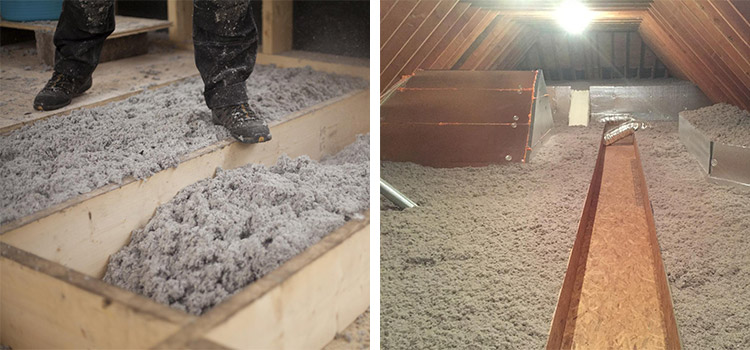
This is a blown application that is used in attics and exterior walls of new or existing structures. This is a green product that is produced from 100% recycled material. Blown Cellulose is a very dense product that creates a great seal and takes fewer inches to achieve the same R-Value as Fiberglass, but, it will also settle and compact at a faster rate than Fiberglass. It is slightly less expensive than Fiberglass and is certainly a viable option when considering how to insulate your home. (Manufacturer: Green Fiber, Product: Sanctuary)
Cellulose Wall Spray
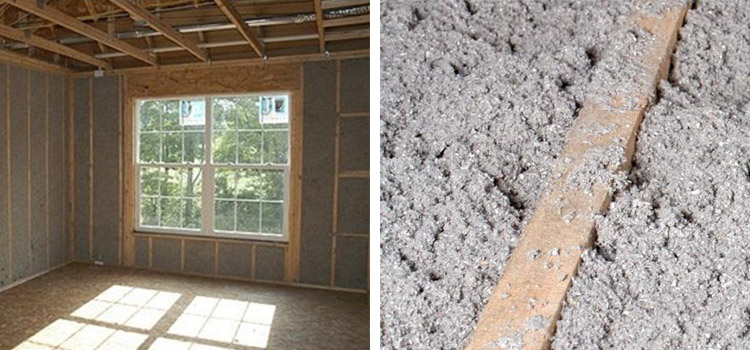
This is an application for new construction that custom fits each cavity to seal all cracks and voids. It is applied with water and a glue adhesive to help the material remain in place. One thing to remember with Cellulose Wall Spray is that it is applied with water, so there needs to be some time to dry before hanging drywall. This drying period is typically 1-3 days. (Manufacturer: Applegate)
BIBS - Blown Fiberglass Wall System

This system is our most popular application for new construction homes and is better known industry wide as a Blown-In-Blanket-System. It is an application for new construction or retrofit projects with open stud cavities. A mesh netting fabric is stapled onto the face of the studs and the cavities are filled with the Blown Fiberglass, creating a custom seal to each cavity space by filling all small spaces within the cavity. A big advantage of this system is that it is applied dry, so there is not dry-time before hanging drywall – it can be covered immediately. (Manufacturer: Owens Corning, Product: ProPink L77 (BIBS))
Acoustical Spray and Metal Building Spray-on
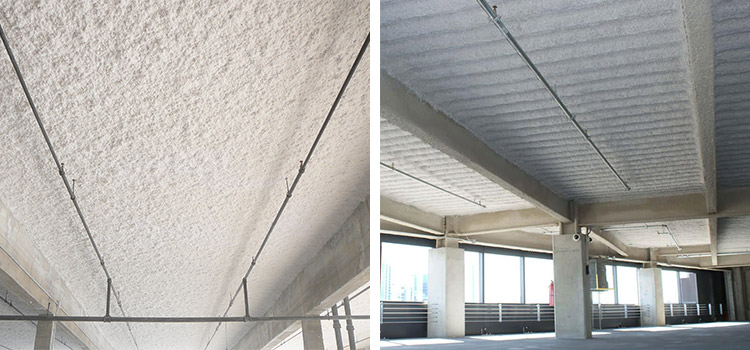
This product is made from 100% recycled newspaper and cardboard content, and is used largely on metal buildings, gymnasiums and auditoriums. It is a versatile product that can be used for thermal, vapor barrier, or acoustical needs. (Manufacturer: International Cellulose Corporation, Product: K13)
Spray Foam
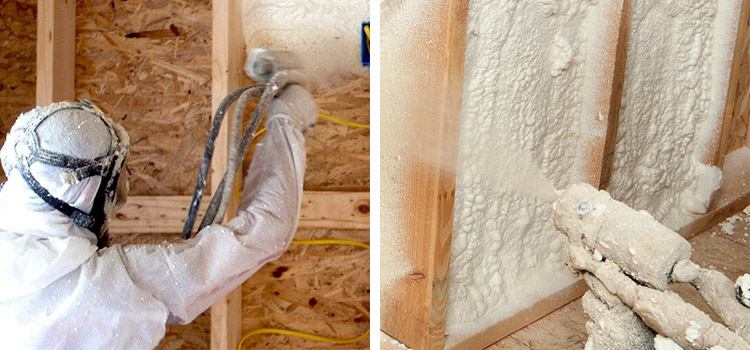
There are a couple different types of spray foam – open-cell spray foam and closed-cell spray foam. Both create great air seals when applied, but the big difference is in R-Value. Open-cell has an R-Value of roughly 4.0 per inch. Whereas, closed-cell has an R-Value of roughly 6.2 to 7.0 per inch, depending on the manufacturer. The other main difference is that closed-cell spray foam can create an effective vapor barrier, while open-cell cannot. (Manufacturer: Lapolla Industries)
Air Sealing
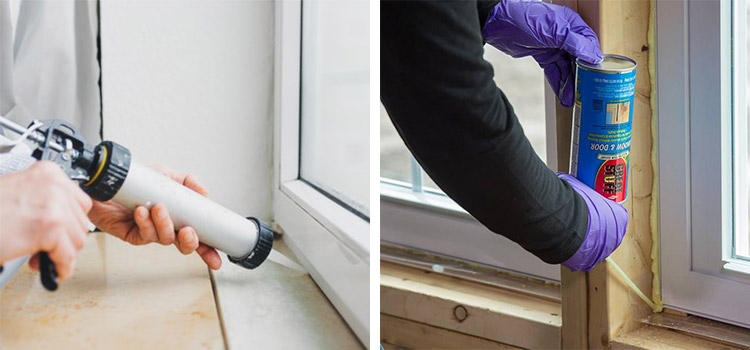
One of the most important methods to create an energy efficient building is to seal all points of air infiltration. This is most commonly necessary in leaky areas around windows, doors, electrical outlets, plumbing and wood to wood joints on exterior walls. It can be achieved through a variety of techniques, such as caulking, foaming, or stuffing insulation into these leaky areas. We offer a caulk package on all new construction projects where we foam behind electrical boxes, around windows and doors, and caulk every wood to wood joint on the face of the exterior walls. (Manufacturer: BOSS, Foam Manufacturer: Tytan or Soudal)
Proper Attic Ventilation
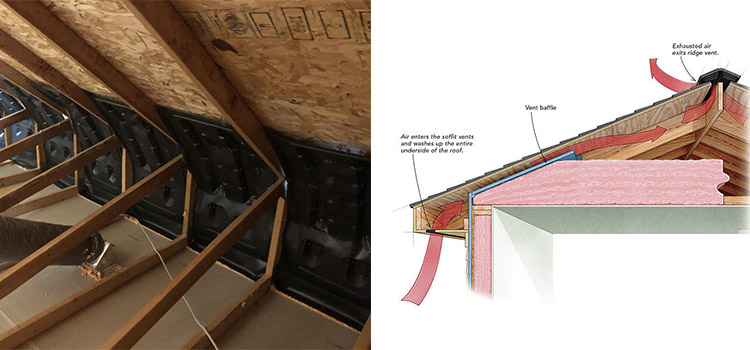
It is extremely important for your home’s attic to have an adequate amount of ventilation. Ideally, air enters the attic at the lowest point, which is known as the eave or soffit, and exits at the highest point, which is known as the ridge. So, if you are building a new home, you definitely want to plan to install soffit vents at your eaves, and a continuous ridge vent at your ridge. If you have an existing home you may look to add soffit vents and a ridge vent, if possible, or an alternative to the ridge vent is to install flat roof vents on the upper side of the roof near the ridge to create the air flow exit.
Another important component to create this air flow is the use of Vent Chutes or Air Baffles. These are most commonly made of a styrofoam or cardboard material, and are stapled or nailed inside the attic at the eave in order to keep the blown insulation from filling the vented soffit, while allowing the air flow to travel up the decking from the soffits to the ridge. A properly ventilated attic keeps from building up extreme temperatures and extends the life of your roof.
Insulation Removal
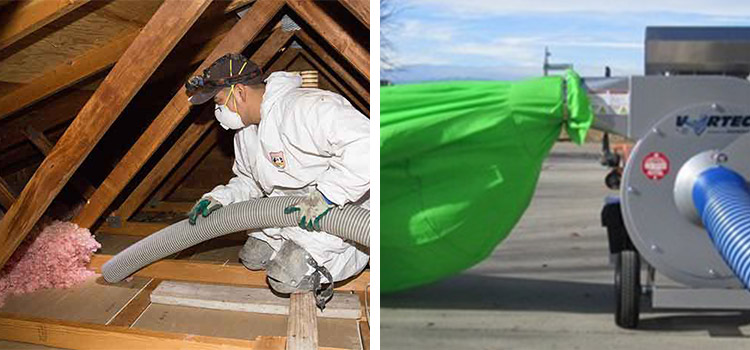
It is sometimes necessary to remove old or damaged insulation before properly air sealing or insulating an attic. This is usually necessary if there has been a leak or fire resulting in water or smoke damage, or if there has been a severe animal infestation where a lot of feces has been left behind. The insulation removal process is most often done with an industrial-sized vacuum made specifically for removing insulation. Although it’s never an easy job, these vacuums provide for a fairly quick and efficient process in removing the insulation.
Pipe Insulation
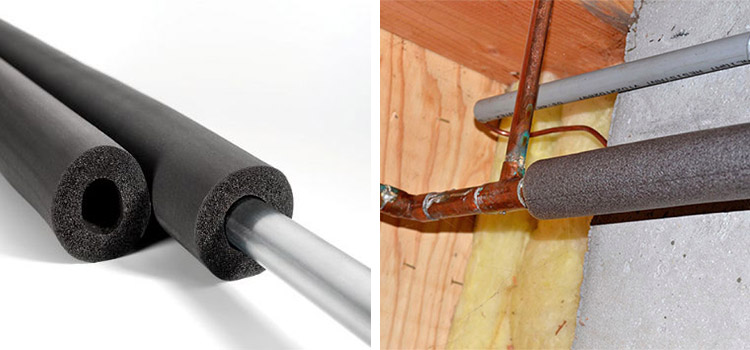
The most common purpose for insulating your water lines is to keep them from freezing. This is most commonly done when your water lines run under your home in a crawl space or above in an attic. However, wrapping your water lines with foam pipe insulation helps maximize the efficiency of your water heater as well.
Water Heater Insulation
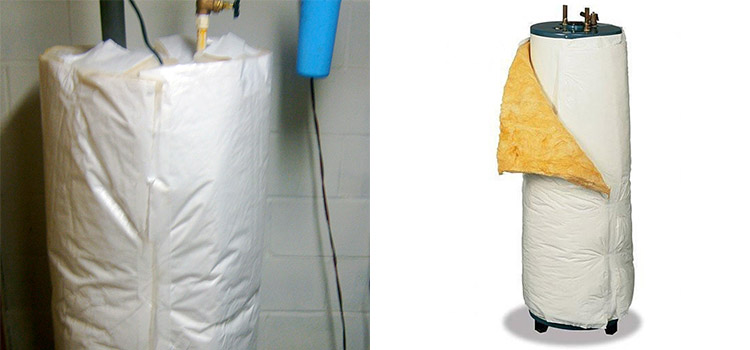
This is a vinyl-faced roll of fiberglass insulation that is made to wrap around your water heater and maximize its efficiency in doing so. We then use very long zip ties to hold the wrap on the heater. This can be done to electric and gas water heaters. You can think of it as basically a jacket for your water heater. The easier the water heater can retain heat, the less energy it has to use to create heat.
Duct Wrap Insulation
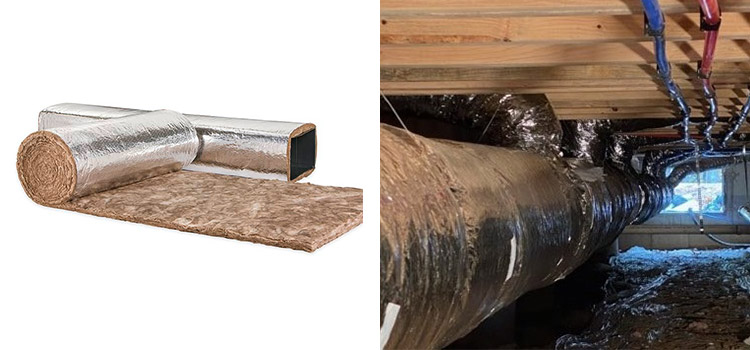
This is a common practice in newer homes, but if you have an older existing home, this may be something to look in to. We simply wrap the duct work with insulation in order to make your heating and cooling unit operate as efficiently as possible.
Insulation Tax Credits
Tax Credit Amount: 30%, up to $1200
Tax Credit does NOT include installation costs. But, you can install the insulation/home sealing yourself and get the credit.
Requirements
- Typical bulk insulation products can qualify, such as batts, rolls, blow-in fibers, rigid boards, expanding spray, and pour-in-place.
- Products that air seal (reduce air leaks) can also qualify, as long as they come with a Manufacturers Certification Statement, including:
- Weather stripping
- Spray foam in a can, designed to air seal
- Caulk designed to air seal
- House wrap
